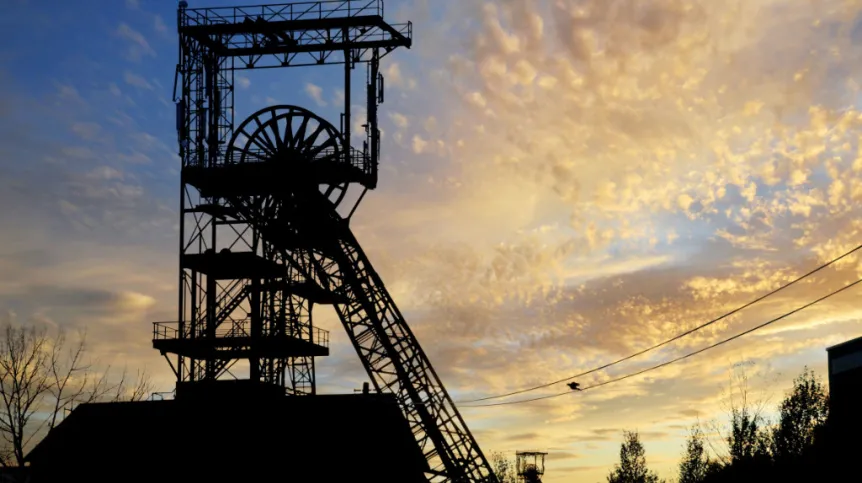
Considerable losses in mining can be avoided by implementing a vision system for monitoring conveyor belts which transport output. Cameras, sensors and special software will ensure that pieces of rock do not pierce costly conveyor belts, and in case of failure will switch off the machine to prevent kilometre-long tear.
Innovative method of analysis based on optical images from cameras and laser scanners designed to monitor mining conveyor belts has been developed by Dr. Paweł Maślak. Scientist from the Institute of Machine Design and Operation at Wroclaw University of Technology sees applications for his invention in underground mining and quarrying.
"Conveyors are essential continuous transport components. In surface mining they are used to transport the material removed to expose coal. The debris is thrown from the excavator, which also operates in continuous mode. In underground mining, conveyors transport hard coal, lignite and copper ore to the destination" - Paweł Maślak explained in an interview with PAP.
As he explains, conveyors are maintenance-free. And since there is no operator working at them directly, accidents happen, about which people find out too late. The worst of them is a tear along a conveyor belt when a big piece of debris falls on it. Belt may also be cut by steel element.
"The largest damage I know of concerned 2 km of the belt, which at the current belt price of up to 8 thousand zlotys per meter, causes losses of millions of zlotys. I try to prevent this by a system based on video media that propose for the mining industry. The system should be installed in the most critical places, where damage usually appears, after the point of loading or re-loading. It is capable of monitoring the belt in real time and stop the conveyor after detecting 2-4 m damage" - the inventor described the operation of the system.
The system, which was developed partly in the framework of a doctoral project, consists of sensors, cameras and software. It will be patented. Talks are under way with PGE Bełchatów on installing a demonstrator and prototype, which would to be tested in real conditions. Trial tests have shown that the implementation of the pilot project is viable and monitoring devices could be installed on 186 conveyors in Bełchatów.
Engineers from Wroclaw University of Technology also work with KGHM, lignite mines in Turów, Konin, and with the companies MineMaster and Kopex. The "Conveyor Belt Monitoring System Using Visual Techniques" can also be used abroad - wherever there is an extensive system of conveyor belts, for example in Australia. Germany might be also interested in the system, as the country has a large number of open-cast coal mines.
According to Maślak, there is no documented competitive design. The researcher hopes that Wroclaw University of Technology will support the entrepreneurship of its employees and enable them to establish startups and commercialise and sell their inventions.
Paweł Maślak was a participant of the "Top 500 Innovators" programme of the Ministry of Science and Higher Education. In an international team at Oxford University he learned how to promote ideas and attract potential investors to fund research and prototyping of innovative devices. The inventor from Wroclaw University of Technology intends to apply for funding from Horizon 2020 and, together with other scientists, develop a project on robotics in mining.
"In the UK I saw that we are behind Western Europe. Ideas that we come up with are world-class. Project implementation is hindered by omnipresent bureaucracy and resistance of groups and institutions that fund research against free allocation of funds" - reported the innovator.
In his opinion, the lack of freedom is especially evident if a scientist can not guarantee the success of planned research project. In accordance with the funding rules, all submitted projects should lead to success. And, unfortunately, such assumptions can not be made in research.
"Across Europe, there is no research funding if the research project does not ensure success. Yes, you need to have knowledge, but to determine the probability of success a preliminary study is usually necessary. These studies are so cost-intensive that you can not afford them before receiving funding. Thus, at the application stage it is impossible to predict what will succeed and what will not. And then those research projects are not funded" - Paweł Maślak revealed the paradoxes of bureaucratic mechanisms.
The project, for which the researcher plans to obtain funding from Horizon 2020 will concern robotics in mining. In March 2016 in Ljubljana, Slovenia at a European Robotics Fellows conference more than 600 scholars will discuss robotics in mining. One of the discussed ideas will be a belt conveyor system, which would allow to eliminate the human factor in assessing the condition of equipment in mines.
According to Maślak the future of the mining industry is robotics. The idea is to effectively extract minerals and at the same time ensure the safety of people. The engineer acknowledges that the changes will be met with public resistance, but it is inevitable that some of the mining crews will go "topside", with mainly machines remaining underground.
PAP - Science and Scholarship in Poland, Karolina Olszewska
kol/ mki/ zan/
tr. RL













